Photos: Gilded Bronze Age weaponry from Scotland
Surprise Discovery
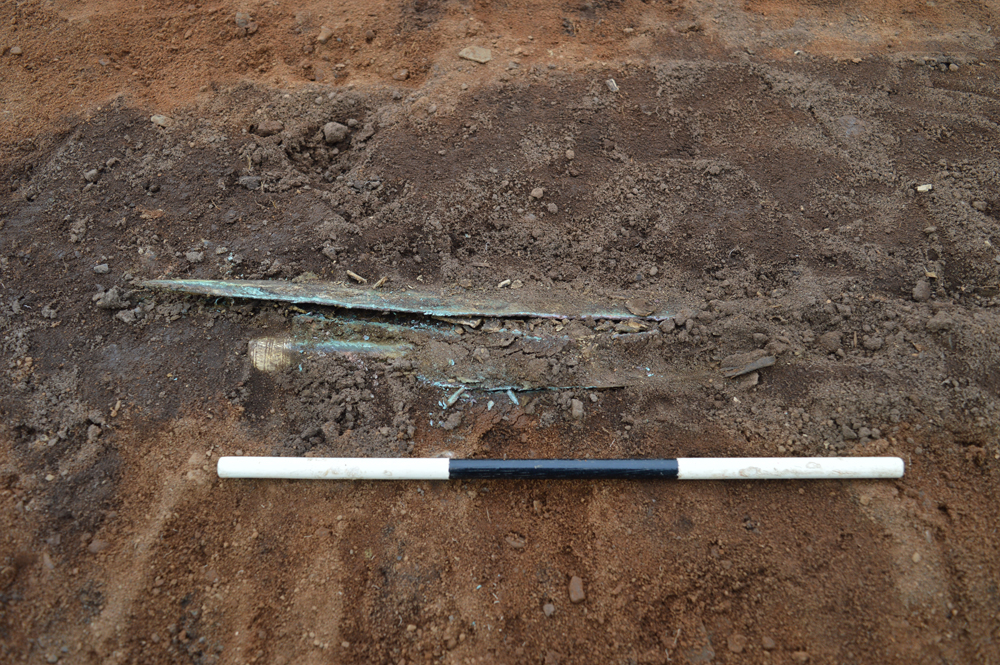
A glimmer of gold and bronze peeks out beneath the dirt at an excavation site in Carnoustie, Scotland. The Angus Council contracted with GUARD Archaeology, Limited to conduct an exploratory dig prior to the construction of two new soccer fields. The team uncovered ancient pits and postholes, features they were exploring when they cleared away some topsoil and were greeted with a view of 3,000-year-old weaponry.
Ongoing Excavations
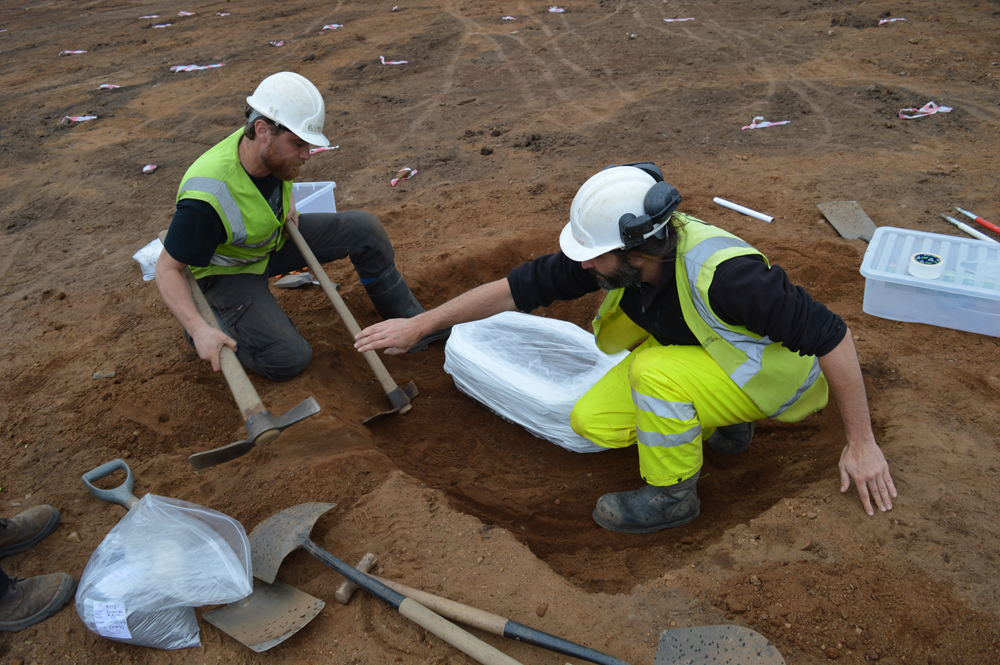
Archaeologists dug out a 176-pound (80 kilogram) chunk of earth containing the artifacts because they did not want to leave them exposed to the elements. The earthen block was taken to a laboratory for excavations, which took a full week.
Uncovering a spearhead

An archaeologist gently brushes dirt away from a Bronze Age spearhead in the laboratory. The spearhead has gold decorations on the socket, which is worn, suggesting that it was used with multiple wooden shafts. In other words, this was likely a working weapon, not a ceremonial piece, according to GUARD Archaeology commercial director Ronan Toolis.
Sword and Spear
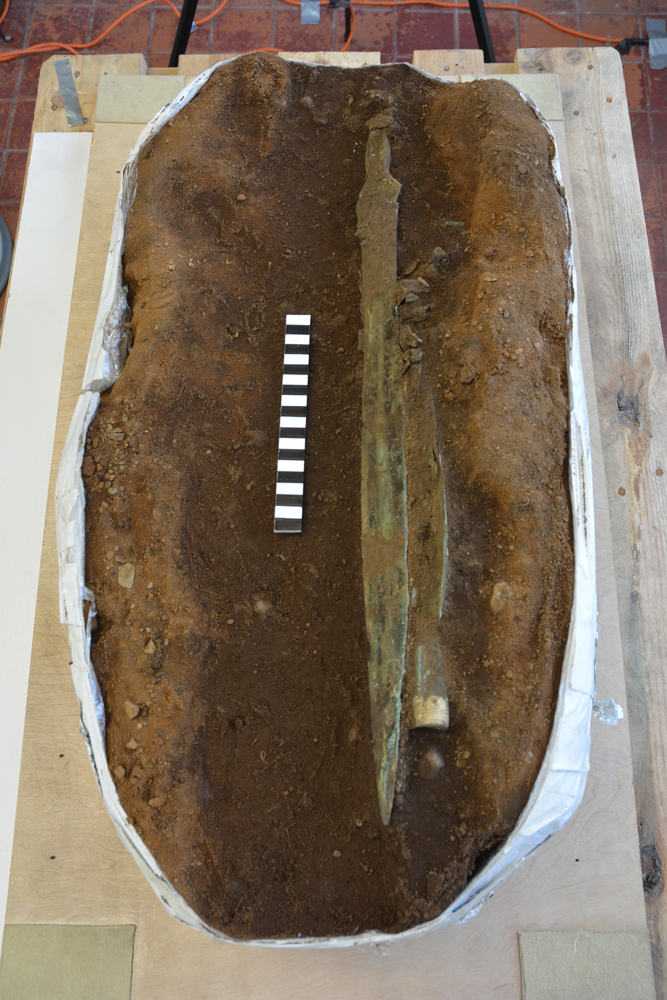
A bronze sword is bundled next to a spearhead in a Bronze Age weapons hoard. The bundle, which also included pieces of scabbard, a lead and tin sword pommel and a bronze pin, appears to date back between 1000 B.C. and 800 B.C., predating written records of the society that made it. Archaeologists plan to use radiocarbon dating on organic material (wood and textiles) found in the bundle in order to pinpoint the hoard's age.
Deadly weapon
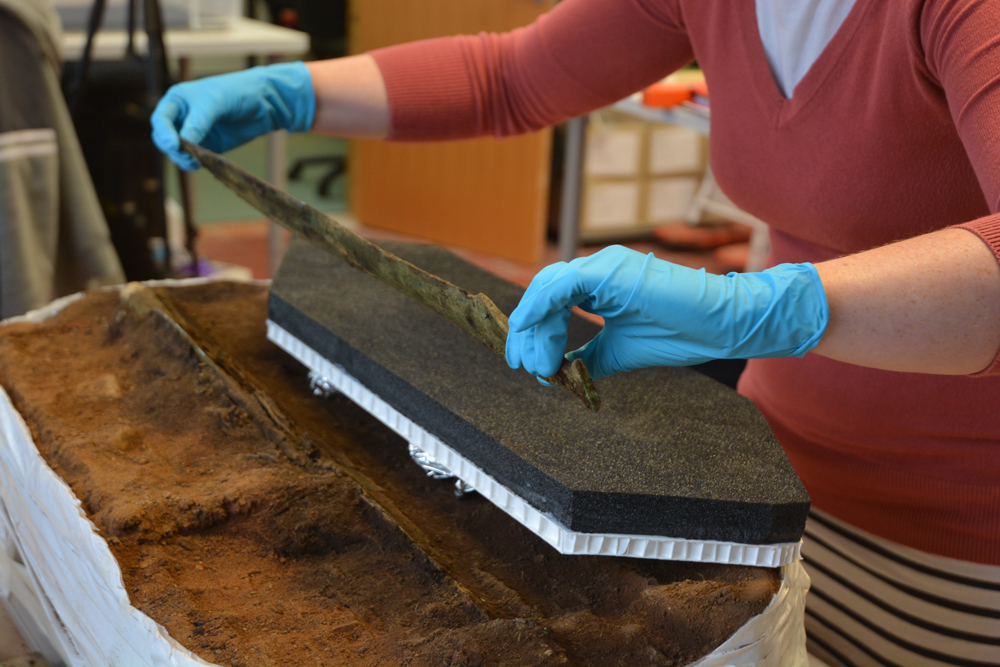
A researcher removes the Bronze Age sword from the earth where it has been for perhaps 3,000 years. It is rare to find Bronze Age weapons buried in the ground, Toolis told Live Science. Typically, archaeologists find bundles of weapons in bogs or in river settings, where they were thrown as sacrifices.
[Read the full story on the Bronze Age weapons hoard]
Decorated Spearhead
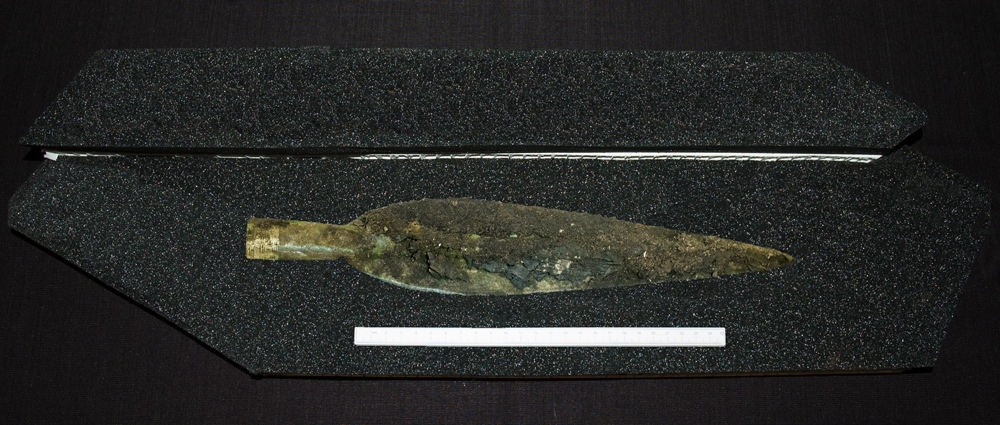
An excavated and cleaned Bronze Age spearhead found in Carnoustie, Scotland. Only one other find like this has been reported in Scotland, Toolis said — a similar spearhead found 50 years ago near Dundee, only about 19 kilometers (12 miles) from Carnoustie. Beyond the two Scotland specimens, there have only been three other spearheads like this found in Ireland and England, Toolis said.
Sign up for the Live Science daily newsletter now
Get the world’s most fascinating discoveries delivered straight to your inbox.
Artifacts of war
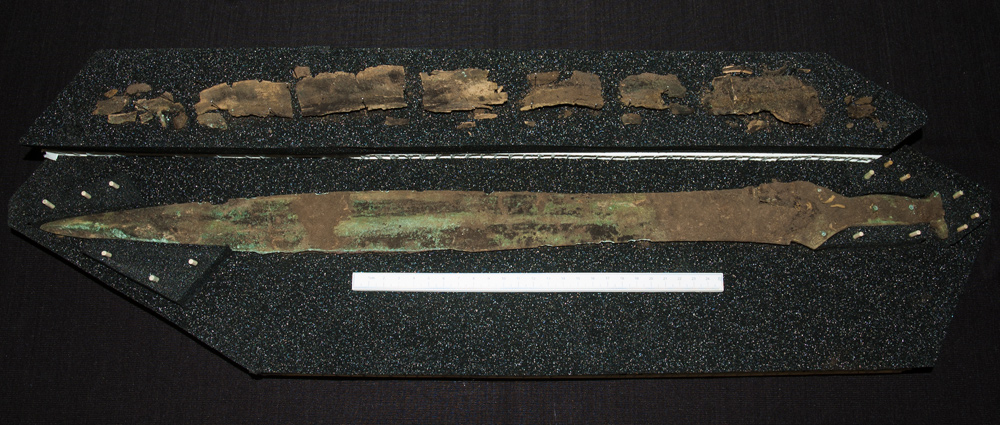
Notches on the Bronze Age sword found in Carnoustie suggest that it, like the spearhead, was used in fighting. The sword was found bundled with the spearhead, a lead-and-tin pommel, a bronze scabbard mount and bronze chape, the metallic fitting at the end of a scabbard, the remains of a wooden scabbard and a bronze pin. The weapons appear to have been wrapped in a bundle and buried. Some animal skin and textile remnants were found around the spearhead and stuck to the bronze pin.
The Excavations
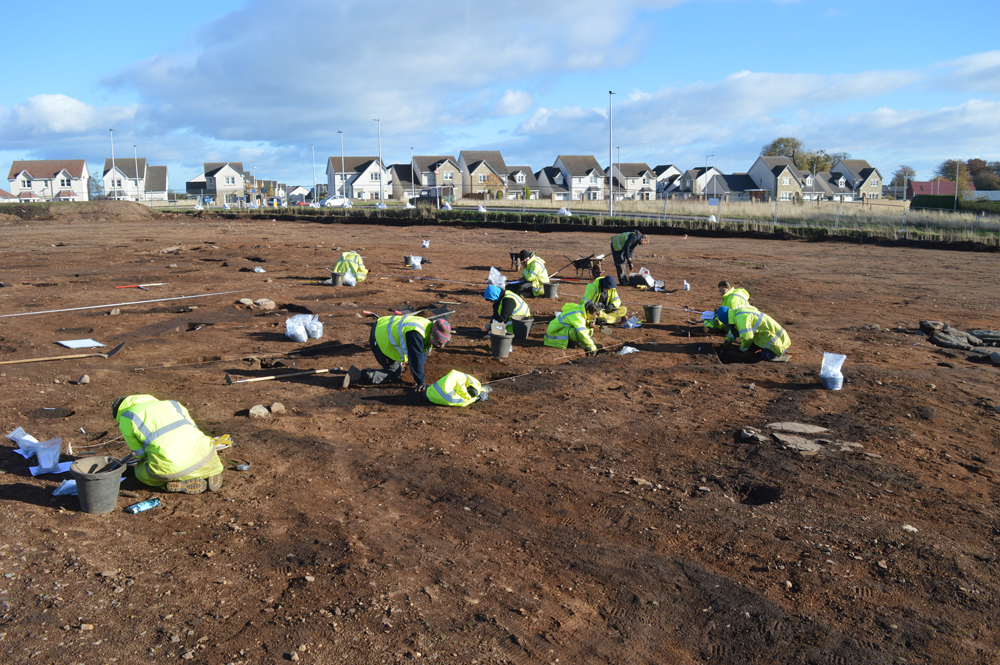
A wide view of the excavation site where the Bronze Age weapons were found. There no sign that this would be an important archaeological site before archaeologists began to dig, Toolis said. The excavations, which ended Feb. 17, 2017, turned up not only the Bronze Age weapons, but the remnants of 12 Bronze Age buildings and two Neolithic timber halls.
Semicircle Home
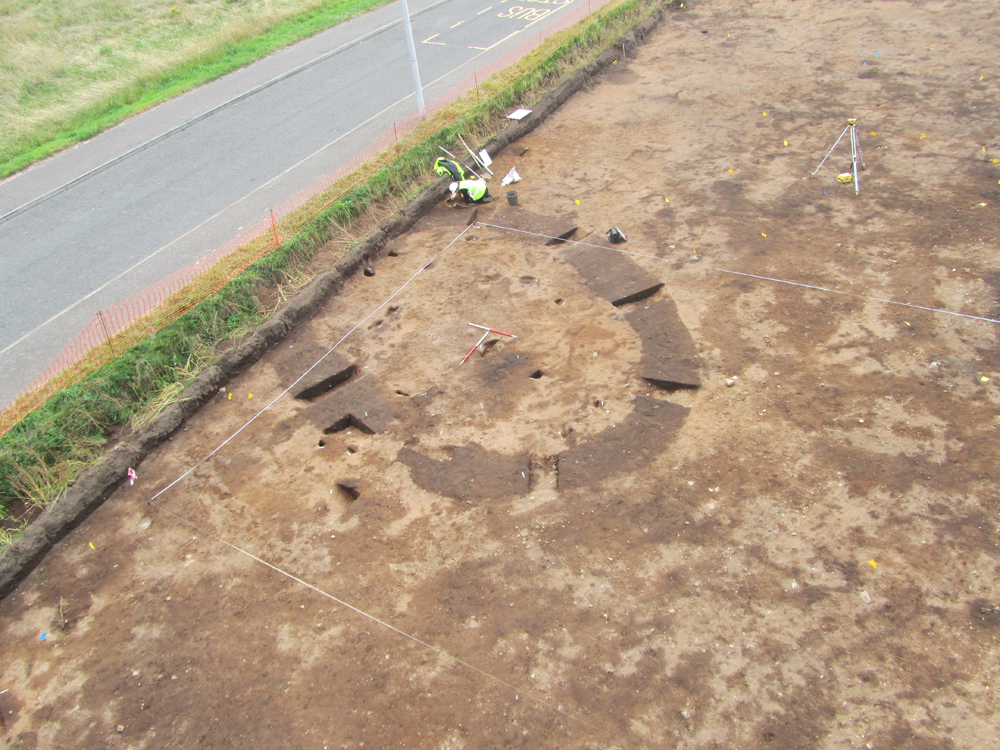
An aerial view shows excavations of a Bronze Age semicircular dwelling, one of 12 found at the Carnoustie site. Archaeologists aren't sure if this was a village, with all of the homes occupied simultaneously, or whether the houses represent single dwellings, occupied and abandoned over a long period of time.
Carnoustie Excavations
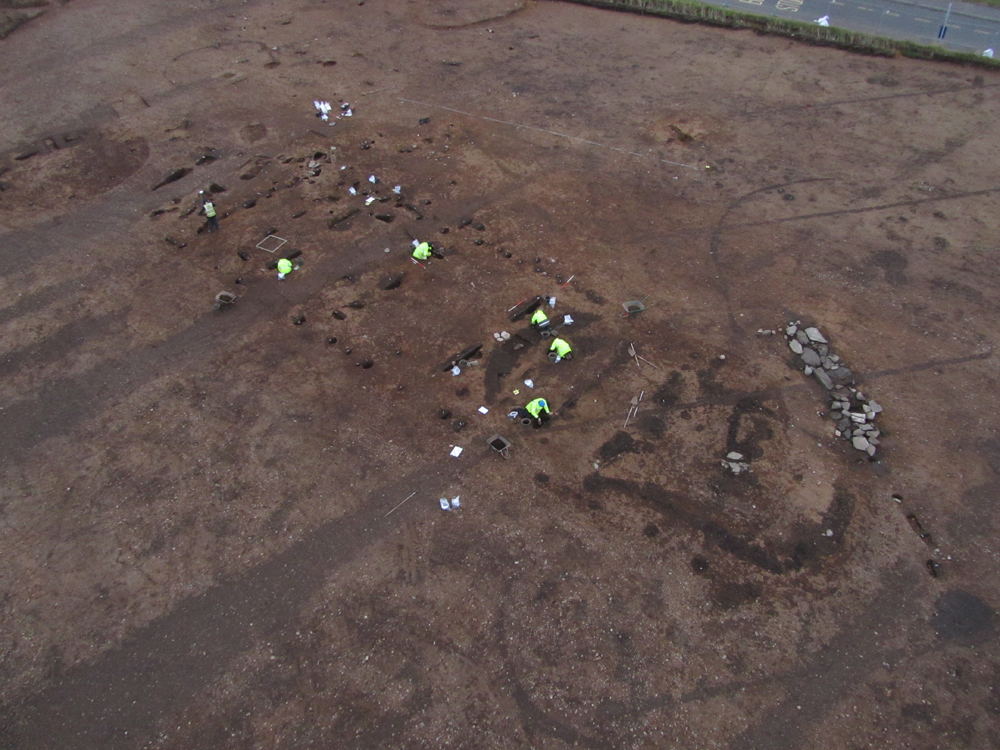
One of the Bronze Age semicircular dwellings, which dates back to perhaps around 1000 B.C., was built on top of a Neolithic, or Stone Age, rectangular timber hall, which might date back to around 4000 B.C. Two rectangle timber halls from the Neolithic were found at the site.
[Read the full story on the Bronze Age weapons hoard]
Organic Materials
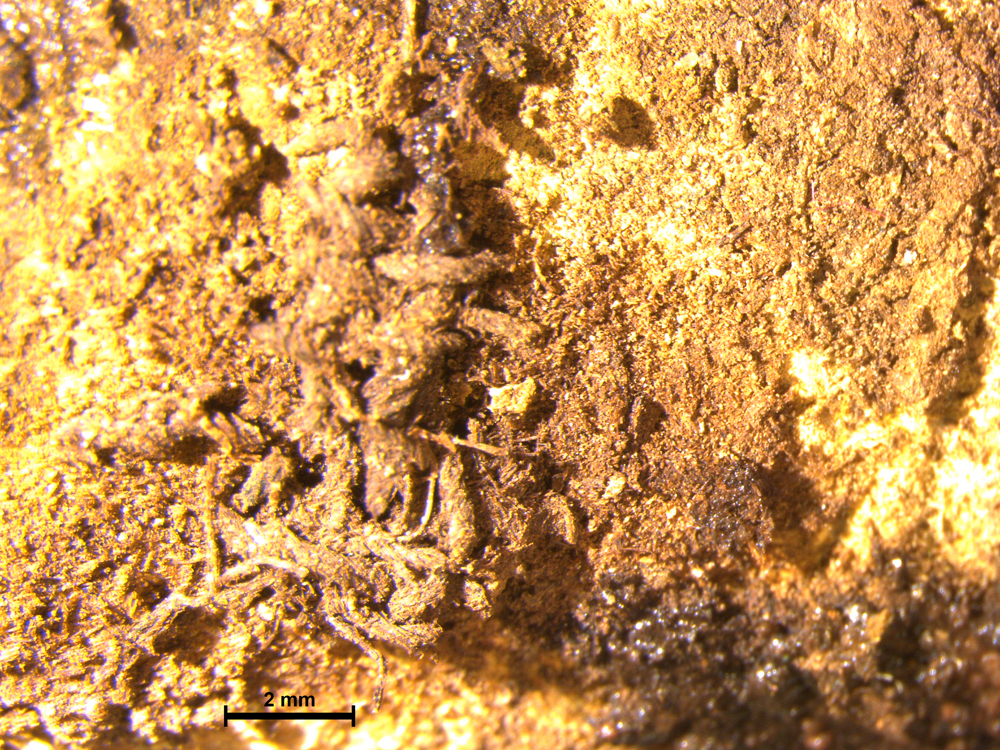
A close-up look at textiles discovered alongside the Bronze Age weaponry. Researchers plan to carbon-date these textiles along with wood from the remnants of the sword scabbard, to more precisely pinpoint the age of the discoveries.

Stephanie Pappas is a contributing writer for Live Science, covering topics ranging from geoscience to archaeology to the human brain and behavior. She was previously a senior writer for Live Science but is now a freelancer based in Denver, Colorado, and regularly contributes to Scientific American and The Monitor, the monthly magazine of the American Psychological Association. Stephanie received a bachelor's degree in psychology from the University of South Carolina and a graduate certificate in science communication from the University of California, Santa Cruz.









